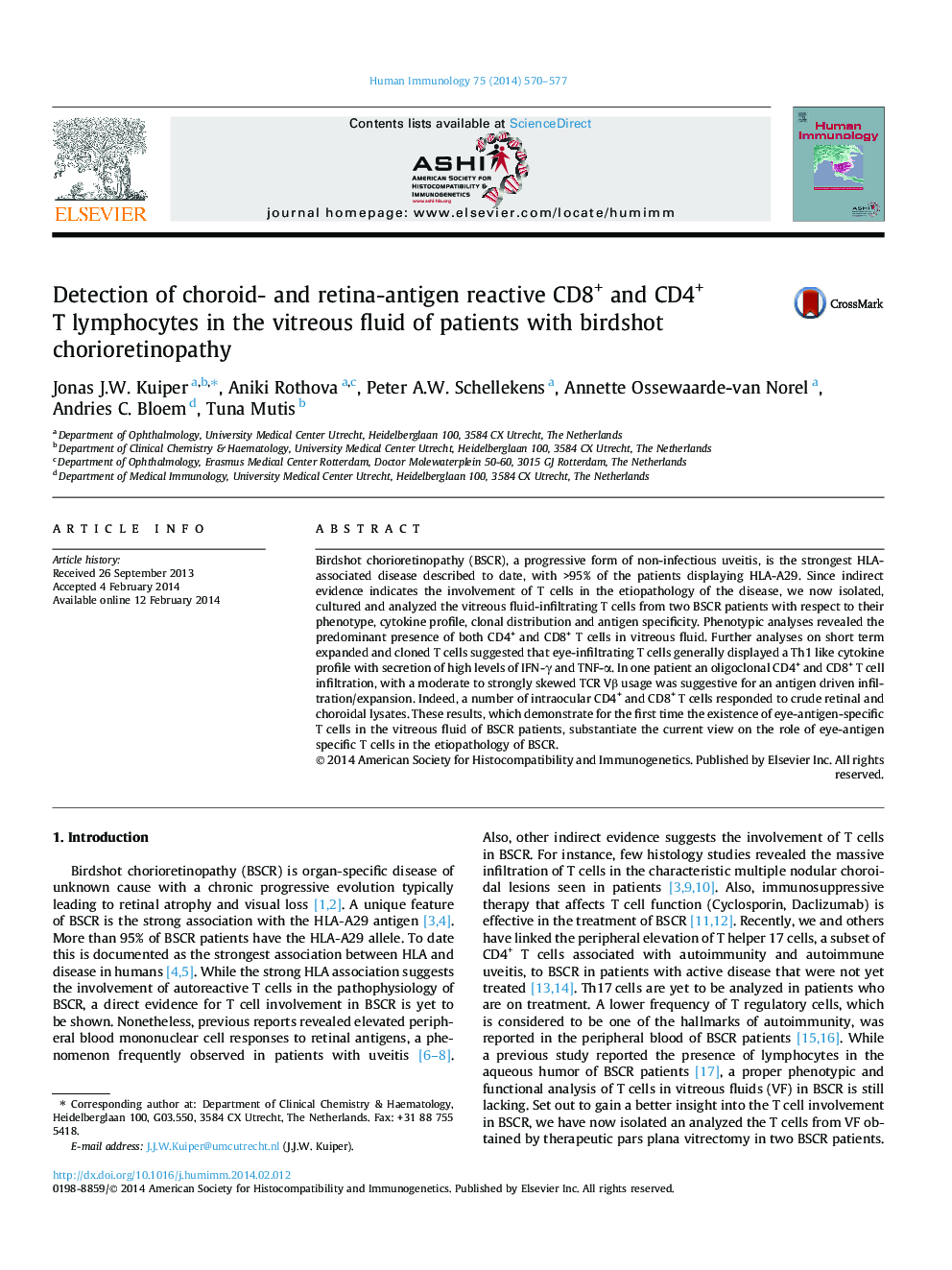| Article ID | Journal | Published Year | Pages | File Type |
|---|---|---|---|---|
| 3349619 | Human Immunology | 2014 | 8 Pages |
Birdshot chorioretinopathy (BSCR), a progressive form of non-infectious uveitis, is the strongest HLA-associated disease described to date, with >95% of the patients displaying HLA-A29. Since indirect evidence indicates the involvement of T cells in the etiopathology of the disease, we now isolated, cultured and analyzed the vitreous fluid-infiltrating T cells from two BSCR patients with respect to their phenotype, cytokine profile, clonal distribution and antigen specificity. Phenotypic analyses revealed the predominant presence of both CD4+ and CD8+ T cells in vitreous fluid. Further analyses on short term expanded and cloned T cells suggested that eye-infiltrating T cells generally displayed a Th1 like cytokine profile with secretion of high levels of IFN-γ and TNF-α. In one patient an oligoclonal CD4+ and CD8+ T cell infiltration, with a moderate to strongly skewed TCR Vβ usage was suggestive for an antigen driven infiltration/expansion. Indeed, a number of intraocular CD4+ and CD8+ T cells responded to crude retinal and choroidal lysates. These results, which demonstrate for the first time the existence of eye-antigen-specific T cells in the vitreous fluid of BSCR patients, substantiate the current view on the role of eye-antigen specific T cells in the etiopathology of BSCR.
